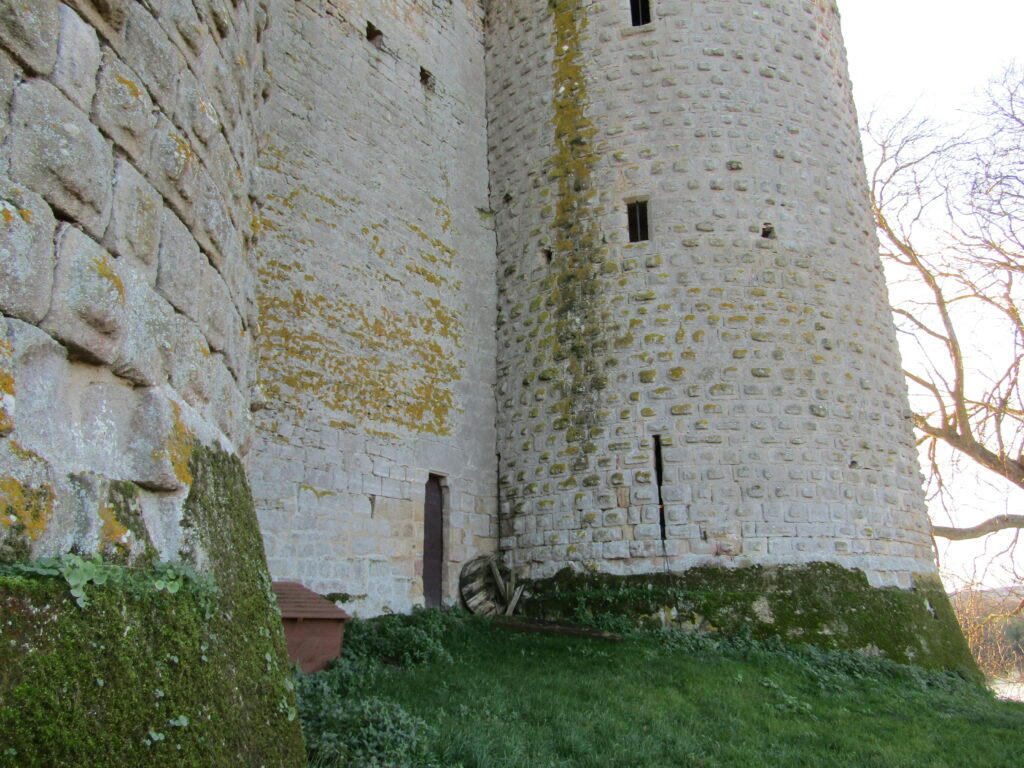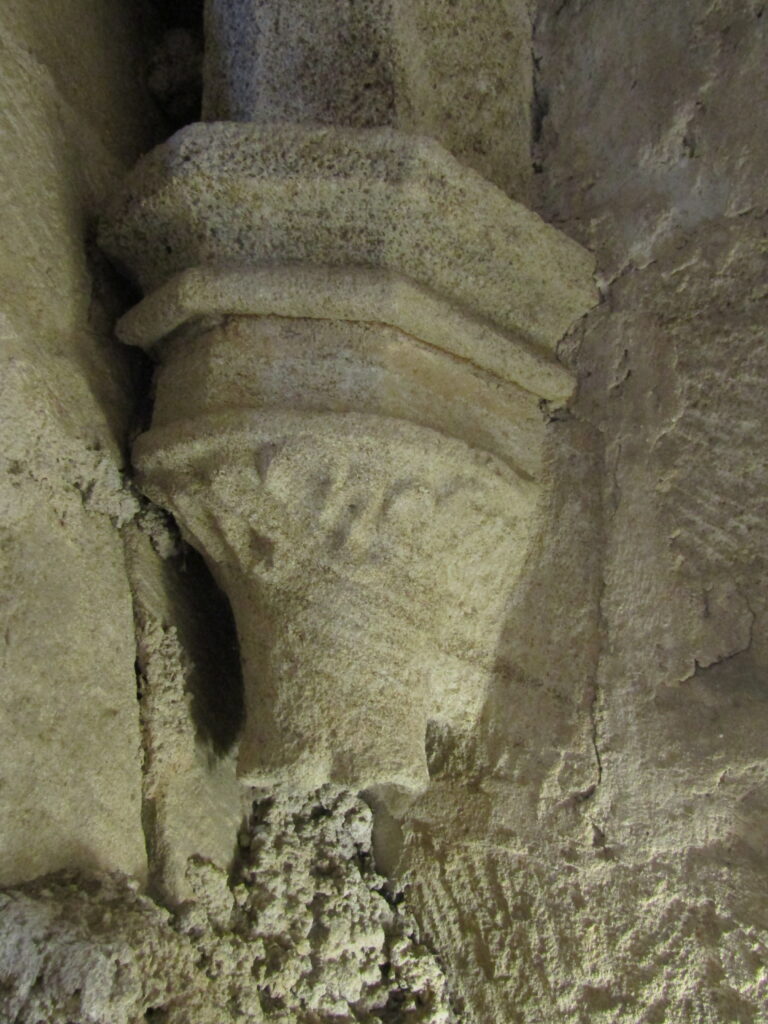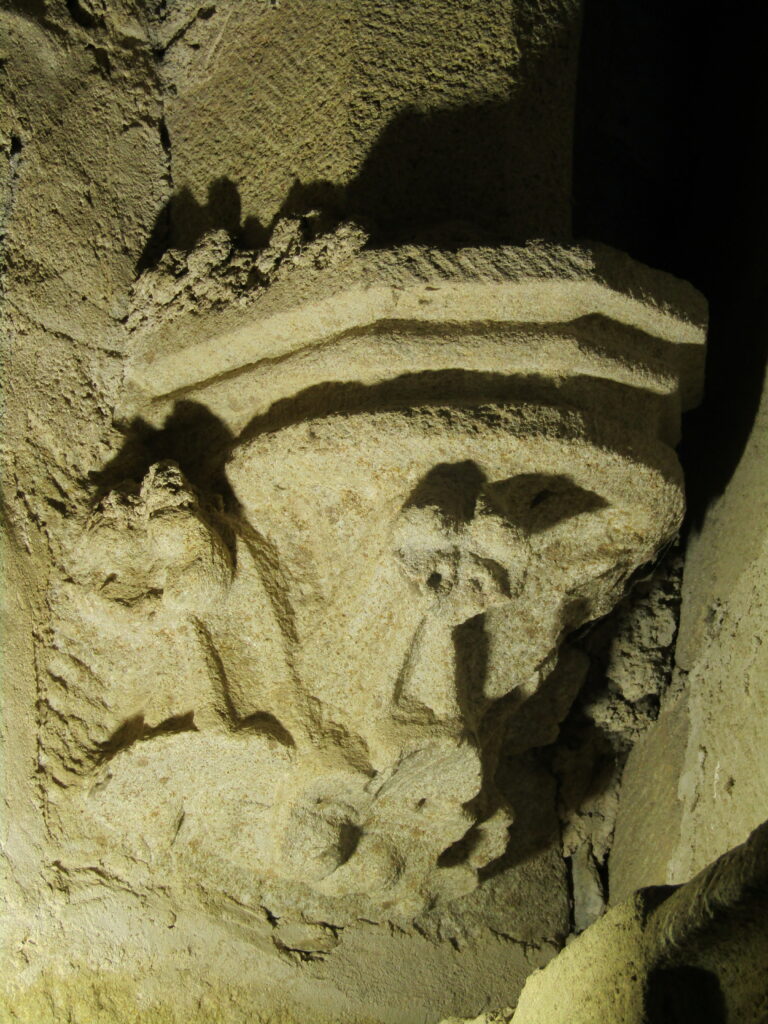
Western tower, room 2
This room is 4m in diameter
and the chamfered ribs divide the vault in six unequal sections called jack
arches. The keystone represents « a double rose separated by small
berries »» (Barbier de Montault).
The
ribbed vault was here too added in a late XIIIth c. work campaign.
The chimney in the room
suggests that this room was meant to become a living room and bedroom. It was
added at a later date, maybe in the early XIVth c., after the vault
then.
Look at the odd culs-de-lampe mixing crockets, trefoils, triple foliage
rings and a simple looking man. One of them – the most beautiful in this room –
to the left of the chimney, was voluntarily broken to make way for the mantelpiece.
The jambs and the mantelpiece of the chimney fit
together, reinforced by little steps carved in both elements.
On both sides of the chimney, note the presence of stone
spandrels, a sort of medieval shelf where domestic utensils would be kept.
The hauberk, or coat of mail,
was worn by knights between ca. 1100 and 1300, with or without a ventail, a hood, both made of the same material:
metal mails sown together. The hauberk, split on both sides to allow mounting
or dismounting a horse, was worn below the knee. Knights started wearing a sort
of long tunic over their hauberk from the XIIIth c., on which they
started painting their blazon. It is what we call the coat of arms. A belt, a
shield, a helmet and a nasal completed the knight’s protective equipment.
Take the stairs again to the second floor. Note while
walking upwards, the walled-up door to your left. That led to the upper storey
of the XIIIth c. great hall.
© March 2023

